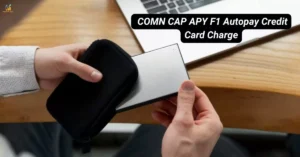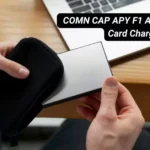Ever been in a situation where you walked up to your car only to see that it has a scratch or a dent that was not there before? It is something that many people go through. Car owners all over America have to face these cosmetic problems every day. The question is; does car insurance cover such damages?
Strap in as we venture into the world of vehicle insurance policies specifically focusing on how they cover cosmetic damage or anything else that you need to know about maintaining your car’s aesthetic appeal.
Understanding Cosmetic Damage: More Than Skin Deep
We should understand what is meant by cosmetic damage before we talk about the insurance sides of it. Such kind of accident not only affects its looks but sometimes influences the car’s worth and self-glorification attached to its ownership.
What Counts as Cosmetic Damage to Your Car?
The term cosmetic damage can be used to refer to any harm that affects the appearance of your vehicle but not its functionality. Think of them as the car’s “superficial problems.” Here is a short list:
- Scratches and scuffs
- Minor dents and dings
- Paint chips or peeling
- Small cracks in windows or mirrors
- Surface rust
These blemishes might seem minor, but they can add up. A car with numerous cosmetic issues can lose value faster than you can say “trade-in.”
Common culprits behind cosmetic damage include:
- Parking lot mishaps
- Weather events (hail, falling branches)
- Road debris
- Vandalism
- Minor fender benders
Make sure that you differentiate between cosmetic damages and structural damage. For instance in an accident, there could be a few minor scratches on the car’s body that would be categorized as superficial but if the framework of the vehicle gets distorted it can be classified as structural damage and this has different pricing implications when it concerns insurance issues.
Breaking Down Your Car Insurance Policy

Let’s talk about the principles of auto indemnity cover. The most important thing you should consider is whether or not the dent in the door will cause a financial disaster for you personally or a loss for the insurance firm.
Types of Car Insurance Coverage
Car insurance isn’t one-size-fits-all. Here’s a quick overview of common coverage types:
- Liability Coverage: Required in most states, it covers damage you cause to others.
- Collision Coverage: Pays for damage to your car from accidents with other vehicles or objects.
- Comprehensive Coverage: Protects against theft, vandalism, weather damage, and more.
- Personal Injury Protection: Covers medical expenses for you and your passengers.
- Uninsured/Underinsured Motorist Coverage: Protects you if you’re hit by a driver with insufficient insurance.
For cosmetic damage, the best options are comprehensive and collision coverage. But wait – it’s not that easy.
Related Article: Does Car Insurance Cover Bullet Holes? Find Out Now!
Does Car Insurance Cover Cosmetic Damage? The Short Answer: It Depends
Did you want a straightforward affirmation or negation? I apologize for any disappointment, but it is much deeper than that; there are many factors which determine if car insurance caters for Cosmetic Damage:
- The type of coverage you have
- The cause of the damage
- Your policy’s specific terms and conditions
- The extent of the damage
Let’s break it down with some scenarios:
| Scenario | Likely Coverage |
| Hail damage | Comprehensive |
| Shopping cart ding | Comprehensive |
| Fender bender scratch | Collision |
| Keyed car | Comprehensive |
| Rock chip on windshield | Comprehensive |
Remember, these are general guidelines. Your specific policy might differ, so always check with your insurer.
When Comprehensive Coverage Comes to the Rescue

Comprehensive coverage is your cosmetic damage superhero – most of the time. It typically covers damage from events out of your control, like:
- Vandalism
- Falling objects
- Natural disasters
- Theft
Let’s say a tree branch falls on your car during a storm, leaving a nasty dent. Comprehensive coverage would likely have your back. But beware – it’s not a cure-all. Most policies have limitations and exclusions.
“Comprehensive coverage can be a lifesaver for unexpected cosmetic damage, but it’s important to understand your policy’s limits,” says Sarah Johnson, a seasoned insurance adjuster.
Fender Benders and Your Coverage: Collision’s Role
Collision coverage steps in when your car tangos with another vehicle or object. If you sideswipe a guardrail and scratch your paint, collision coverage might save the day.
But here’s the rub: minor cosmetic damage from low-speed bumps might not be worth claiming. Why? Enter the deductible drama.
Is It Worth Claiming Cosmetic Damage on Your Insurance?
Car insurance can be tricky when it comes to cosmetic damage. You might wonder if it’s worth making a claim for that dent or scratch. It’s important to consider your deductible and potential rate increases.
Think about the repair cost versus what you’ll pay out of pocket. Sometimes, it’s cheaper to fix small issues yourself. This can help keep your premiums from going up.
Remember, multiple small claims can make you look risky to insurers. It’s often best to save insurance for bigger problems. Consider each situation carefully before deciding to file a claim.
Let’s crunch some numbers:
| Repair Cost | Deductible | Insurance Payout | Worth Claiming? |
| $300 | $500 | $0 | No |
| $750 | $500 | $250 | Maybe |
| $2000 | $500 | $1500 | Likely yes |
The bottom line? Do the math before you claim.
What If Your Insurance Doesn’t Cover Cosmetic Damage?

Don’t throw in the towel if insurance won’t cover your cosmetic woes. You’ve got options:
- DIY Repairs: For minor scratches or chips, DIY kits can work wonders. Just be sure you know what you’re doing to avoid making things worse.
- Professional Detailing: Sometimes, a good buff and polish can minimize the appearance of scratches.
- Paintless Dent Removal: This technique can fix many dents without needing a paint job.
- Body Shops: For more serious damage, a reputable body shop can work magic – but it’ll cost you.
- Vinyl Wraps: Cover up extensive cosmetic damage with a whole new look.
Remember, sometimes living with minor cosmetic damage is the most cost-effective choice.
Keeping Your Car Looking Sharp: Prevention is Key
Keeping your car looking good is easier than fixing damage later. Regular waxing creates a protective shield against minor scratches and environmental harm. Parking carefully, away from busy areas, can prevent dings and dents.
Ceramic coatings are new technological advancements that provide enduring protection for your car’s paint. There are several benefits of ceramic coatings, which include their ability to repel water, resist harmful UV rays and ease cleaning.
Never ignore the inside. By utilizing cover for seats and carpets on car floors you will be able to make it look as though it is still brand new from outside. You can also do regular cleaning as well as detailing thereby keeping your car’s value throughout the years.
Related Article: Does Your Car Insurance Cover Dents and Scratches? Find Out Now!
Navigating the Claims Process for Cosmetic Damage
If you do decide to file a claim for cosmetic damage, here’s your roadmap:
- Document the Damage: Take clear photos from multiple angles.
- Contact Your Insurer: Report the damage as soon as possible.
- Get an Estimate: Your insurance might require estimates from approved shops.
- Review Your Coverage: Understand what’s covered and what your out-of-pocket costs will be.
- File the Claim: Provide all necessary documentation and information.
- Follow Up: Stay in touch with your adjuster throughout the process.
“The key to a smooth claims process is clear communication and thorough documentation,” advises Tom Lee, a veteran claims specialist.
How to Cover Cosmetic Damage Caused by an Accident?
If your car has cosmetic damage from an accident, your best option is to file a claim under your collision coverage.
When your car crashes into something else, you need collision insurance to pay for its repair. It is however important to think about whether the repairs are cost-effective compared to your deductible and, therefore, requesting a claim may not make much sense. It may sometimes be cheaper to fix little scratches or dings yourself.

One option, for instance, is to get full coverage. For example, “comprehensive coverage” refers to accidents not caused by a collision, usually due to theft or vandalism, or natural disasters.
Comprehensive coverage can reimburse you for any kind of cosmetic injury not resulting from a collision accident. It’s important to check your policy at the same time as talking with your insurer to make sure you understand your options completely.
When Does Cosmetic Damage Repair Become a Necessity?
Though small obtrusions or knicks might appear insignificant, not mending them might cause more troubles in latter times. If such niggling scratches are not corrected over a period of time, they could become worse and even affect how strong your car is.
If you’ve got an extensive cosmetic blemish please note that it will reduce your car’s resale value drastically, so fixing it in good time is important. Ultimately however, we must compare repair costs with neglecting cosmetic problems for years to come.
Frequently Asked Questions
Will my rates go up if I claim cosmetic damage?
Possibly. Rate increases depend on your insurer, claim history, and policy terms.
Can I add coverage specifically for cosmetic damage?
Some insurers offer cosmetic damage riders, but they’re not common. Check with your provider.
How does leasing or financing affect cosmetic damage coverage?
Leased or financed vehicles often require full coverage, which typically includes comprehensive and collision.
Are there time limits for reporting cosmetic damage?
Yes, most policies require prompt reporting. Check your policy for specific timeframes.
Can I choose my own repair shop for cosmetic damage?
It depends on your policy. Some insurers allow you to choose, while others have preferred shops.
Final Thoughts
So, does car insurance cover cosmetic damage? The answer isn’t black and white, but now you’ve got the tools to navigate the gray areas. Remember:
- Comprehensive and collision coverage are your best bets for cosmetic damage protection.
- Always weigh the costs of claiming against paying out of pocket.
- Prevention is your first line of defense against cosmetic damage.
- When in doubt, talk to your insurance provider about your specific coverage.
Your car is more than just a means of transportation – it’s an investment. Understanding how to protect its appearance can save you headaches and money down the road.

I write professional blogs specializing in car insurance. My content delves into various aspects of insurance policies, providing valuable insights and tips for choosing the best coverage. My goal is to make complex insurance topics accessible and engaging for all readers.











